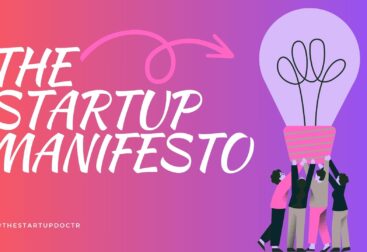Navigating stakeholder conflict is like steering a ship through stormy seas—challenging, but crucial for reaching your destination. In the complex and dynamic world of product management, conflicting visions among stakeholders are almost inevitable, particularly when it comes to defining and refining a product roadmap. The product roadmap is a strategic document that outlines the vision, direction, priorities, and progress of a product over time. It’s a critical tool for aligning teams, guiding development, and communicating with stakeholders. But what happens when these stakeholders—whether they are executives, marketing leads, sales managers, or technical architects—bring their own perspectives, priorities, and objectives to the table? The result is often a clash of visions that can stall progress, create frustration, and even derail the product’s success.
In this comprehensive guide, we will explore how to effectively navigate conflicting stakeholder visions, leveraging proven strategies, frameworks, and real-world examples. By the end of this article, you’ll have a toolkit of methods to align stakeholders, drive progress, and ensure that your product roadmap serves as a cohesive and powerful guide for your team.
—
Understanding the Roots of Stakeholder Conflict
Before diving into the strategies for resolving stakeholder conflict, it’s essential to understand the common sources of these conflicts. Conflicting visions usually arise from several key factors:
1. Divergent Objectives: Different departments or individuals within an organization often have varying goals. For instance, the sales team might prioritize features that appeal to large enterprise customers to drive revenue, while the engineering team may focus on technical scalability to ensure the product can support future growth. These divergent objectives can lead to a tug-of-war over what features should be prioritized on the roadmap.
2. Resource Constraints: Limited resources—whether time, budget, or manpower—often force stakeholders to make tough decisions about which initiatives to prioritize. When resources are constrained, stakeholders might advocate for different projects based on their departmental needs, leading to disagreements about what should be included in the roadmap.
3. Risk Tolerance: Stakeholders may have different levels of risk tolerance. For example, an innovative but risky feature might excite the product and development teams but concern finance and legal teams due to potential budget overruns or regulatory issues. This difference in risk tolerance can create friction when deciding which initiatives to pursue.
4. Varying Time Horizons: Stakeholders might have different time horizons in mind when proposing initiatives. While some may focus on short-term gains to meet immediate business goals, others might be more concerned with long-term strategic objectives. This can create tension when deciding whether to prioritize quick wins or invest in longer-term projects that might not yield immediate results.
5. Personal Agendas and Biases: Stakeholders might have personal biases or agendas that influence their opinions on the product roadmap. For example, a marketing leader might push for features that enhance branding and user acquisition, while a technical lead might advocate for backend improvements that aren’t immediately visible to users but are crucial for the product’s stability and scalability.
—
The Cost of Unresolved Stakeholder Conflict
Unresolved conflicts among stakeholders can have significant consequences for a product and the organization as a whole. These include:
– Delayed Product Launches: Disagreements can lead to delays in decision-making, causing missed deadlines and delayed product launches. When stakeholders can’t agree on priorities, the product roadmap becomes stagnant, and development grinds to a halt.
– Reduced Team Morale: Ongoing conflicts can create a tense work environment, reducing morale and productivity among team members. When the team sees that leadership is divided, it can lead to frustration and a lack of motivation.
– Misaligned Products: Without alignment, the final product may end up being a disjointed mix of features that don’t work well together, leading to a poor user experience and weak market performance. A product that tries to cater to too many conflicting visions often fails to excel in any one area.
– Wasted Resources: Efforts spent on mediating conflicts and reworking the roadmap can drain resources, leaving less time and budget for actual product development. Constant rework and indecision can lead to inefficiencies and increased costs.
Given these potential downsides, it’s clear that resolving stakeholder conflicts quickly and effectively is critical for driving progress and ensuring the product’s success. The question then becomes: How can product managers navigate these conflicts in a way that aligns stakeholders and moves the product forward?
—
Strategies for Navigating Conflicting Stakeholder Visions
Navigating stakeholder conflict requires a combination of empathy, negotiation, and strategic thinking. Below are seven strategies that can help product managers effectively manage and resolve conflicts over the product roadmap:
1. Establish a Clear Product Vision and Goals
The foundation of any successful product roadmap is a clear, well-communicated product vision. This vision should articulate what the product aims to achieve, who it serves, and how it aligns with the company’s broader objectives. When stakeholders have a shared understanding of the product’s vision, it’s easier to align their priorities and resolve conflicts.
Example: Consider a product manager at a tech startup who was struggling with conflicting demands from the sales and engineering teams. Sales wanted features that would help close deals with large clients, while engineering was pushing for improvements to the product’s core infrastructure. To resolve the conflict, the product manager revisited the product vision, which emphasized creating a scalable platform that could support rapid growth. By aligning both teams around this vision, they were able to prioritize infrastructure improvements that would enable future sales without compromising short-term goals.
Method: Use vision statements and OKRs (Objectives and Key Results) to create a shared understanding among stakeholders. Revisit these documents regularly to ensure that they remain relevant and that all stakeholders are aligned. A well-crafted product vision statement serves as a north star that guides decision-making and helps resolve conflicts.
2. Prioritize Through Data-Driven Decision-Making
Data is a powerful tool for resolving stakeholder conflicts. By relying on data—whether it’s user research, market analysis, or financial projections—product managers can provide an objective basis for prioritizing certain initiatives over others.
Example: In a large financial services company, the marketing and product teams were at odds over the next big feature. Marketing wanted a new feature that would attract a younger demographic, while the product team advocated for enhancements that would improve the product’s reliability for existing customers. The product manager decided to conduct a series of customer interviews and surveys to gather data on user preferences. The data revealed that the existing customer base, which was more lucrative, valued reliability over new features. Armed with this data, the product manager was able to persuade both teams to focus on reliability improvements.
Method: Implement a framework like the RICE scoring model (Reach, Impact, Confidence, Effort) to objectively evaluate and prioritize features based on their potential impact and feasibility. Share these metrics transparently with stakeholders to build consensus. Data-driven decisions are less likely to be disputed because they are grounded in objective evidence rather than subjective opinions.
3. Facilitate Open Communication and Collaboration
Open communication is key to resolving conflicts. Stakeholders need to feel heard and understood, even if their ideas aren’t ultimately prioritized. Facilitating open discussions where stakeholders can express their views and concerns can help defuse tension and foster collaboration.
Example: A product manager at a mid-sized e-commerce company faced conflicting demands from the operations and user experience teams. Operations wanted to streamline backend processes, while UX was pushing for a complete redesign of the customer-facing website. The product manager organized a workshop where both teams could present their cases, supported by data and user feedback. By facilitating an open discussion, the product manager helped both teams understand each other’s perspectives and find common ground. The final roadmap included phased improvements that addressed both backend efficiency and front-end user experience.
Method: Use frameworks like the “Six Thinking Hats” by Edward de Bono to structure discussions and ensure that all perspectives are considered. This method encourages participants to explore different aspects of a problem (facts, emotions, creativity, etc.) in a structured way, leading to more balanced and collaborative decision-making. Regular stakeholder meetings, workshops, and brainstorming sessions can also foster a culture of open communication.
4. Build Relationships and Trust
Building strong relationships and trust with stakeholders is essential for navigating conflicts. When stakeholders trust the product manager and each other, they are more likely to compromise and support decisions that are in the best interest of the product.
Example: A product manager in a global software company faced resistance from the legal and compliance teams whenever new features were proposed. To build trust, the product manager took the time to understand the legal team’s concerns and constraints. By involving them early in the ideation process and regularly updating them on progress, the product manager was able to build a strong relationship with the legal team. This proactive approach reduced friction and made it easier to reach compromises that satisfied both legal requirements and business objectives.
Method: Schedule regular one-on-one meetings with key stakeholders to build rapport and understand their priorities and concerns. Consistently demonstrate transparency and follow through on commitments to build trust over time. Trust is built through consistent, positive interactions and by demonstrating that the product manager is a reliable partner in achieving the product’s goals.
5. Leverage Mediation and Conflict Resolution Techniques
In cases where conflicts escalate and cannot be resolved through discussion alone, mediation techniques can be effective. A neutral third party, either from within the organization or an external consultant, can help facilitate a resolution by guiding the discussion and helping stakeholders find common ground.
Example: In a multinational corporation, a major conflict arose between the regional and global marketing teams over the direction of the product roadmap. The regional team wanted features tailored to local markets, while the global team pushed for a standardized approach. The conflict reached a stalemate, and progress stalled. The company brought
in a mediator who guided the teams through a structured negotiation process. The mediator helped the teams identify their underlying interests and find a compromise that allowed for some degree of localization within a standardized global framework.
Method: Consider using negotiation frameworks like the “Interest-Based Relational (IBR)” approach, which focuses on separating the people from the problem and understanding the underlying interests of each party. This approach helps stakeholders move away from entrenched positions and work towards mutually beneficial solutions. Mediation can be particularly useful when conflicts become deeply entrenched and stakeholders are unable to reach an agreement on their own.
6. Align Roadmaps with Strategic Business Goals
When stakeholders are at odds over the product roadmap, aligning the roadmap with the organization’s broader strategic goals can help clarify priorities. By demonstrating how the roadmap supports the company’s long-term objectives, product managers can build a stronger case for prioritizing certain initiatives.
Example: A product manager at a healthcare technology company was caught between the demands of the sales team, who wanted quick wins to boost quarterly revenue, and the R&D team, who wanted to invest in innovative but longer-term projects. The product manager aligned the roadmap with the company’s strategic goal of becoming a leader in digital health innovation. By showing how the R&D initiatives would position the company for future growth, the product manager was able to gain buy-in from the sales team to pursue longer-term projects that would drive innovation and differentiate the company in the market.
Method: Regularly revisit the company’s strategic goals and ensure that the product roadmap is aligned with these objectives. Use visual tools like a strategy roadmap to illustrate how each initiative contributes to the company’s overall strategy. This alignment not only helps prioritize initiatives but also strengthens the case for resource allocation and investment in the roadmap.
7. Emphasize User-centred Design and Customer Value
When conflicts arise over the product roadmap, bringing the focus back to the user can help stakeholders align around a common goal. By emphasizing customer value and user-centred design, product managers can shift the conversation from internal disagreements to external impact.
Example: In a consumer electronics company, the engineering team wanted to prioritize hardware innovations, while the marketing team pushed for features that could be monetized quickly. The product manager conducted a series of user interviews and usability tests to understand what customers valued most. The findings revealed that users were more interested in intuitive design and ease of use than in hardware specifications. By presenting this data, the product manager was able to shift the focus from internal preferences to what would deliver the most value to customers, leading to a more user-centred roadmap.
Method: Regularly engage with users through interviews, surveys, and usability testing to gather insights into their needs and preferences. Use these insights to inform the roadmap and present them to stakeholders as evidence for prioritizing features that will deliver the most value to customers. User-centred design not only aligns the team around customer value but also helps differentiate the product in the market.
—
Conclusion: Steering the Ship Toward Success
Navigating stakeholder conflict is a critical skill for any product manager. By understanding the root causes of conflict, employing strategies like clear communication, data-driven decision-making, and aligning with strategic goals, product managers can effectively resolve disagreements and drive progress. Remember that conflict, when managed well, can lead to better outcomes by bringing diverse perspectives to the table and challenging assumptions. The key is to approach conflicts with empathy, clarity, and a focus on the broader goals of the product and the organization.
In the end, the ability to navigate these stormy seas and align stakeholders around a common vision is what will ultimately steer your product—and your team—toward success.












